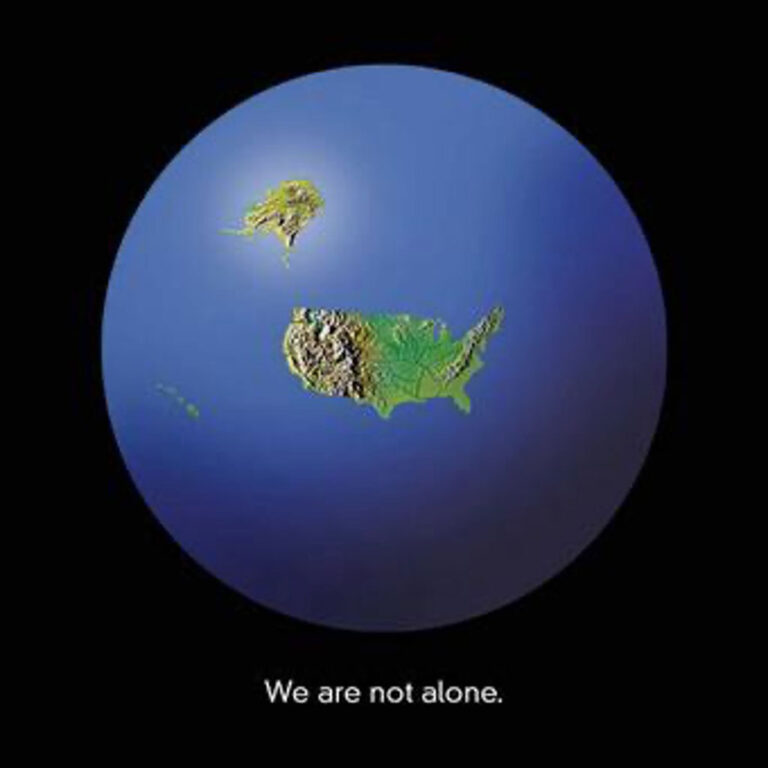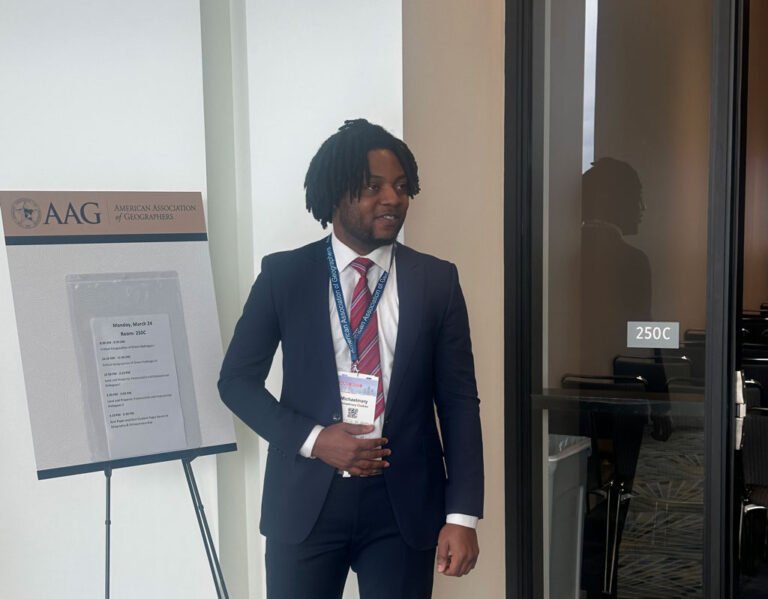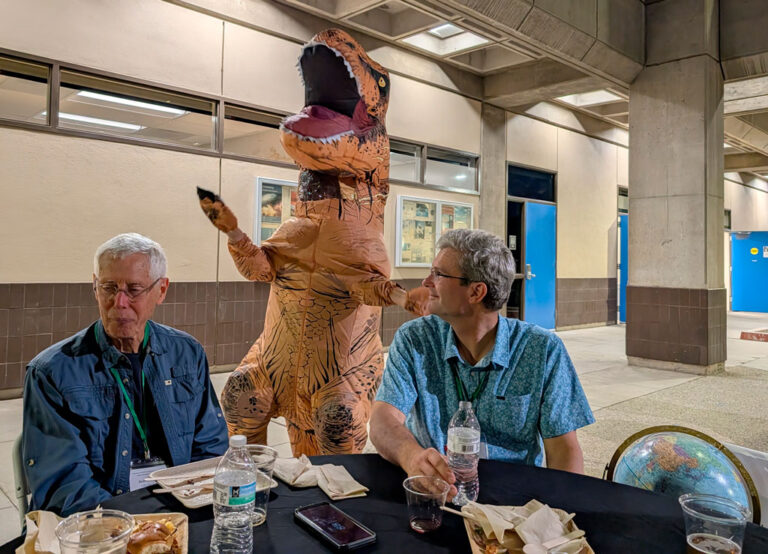Spaces of Possibility: From Detroit to San Francisco and Beyond
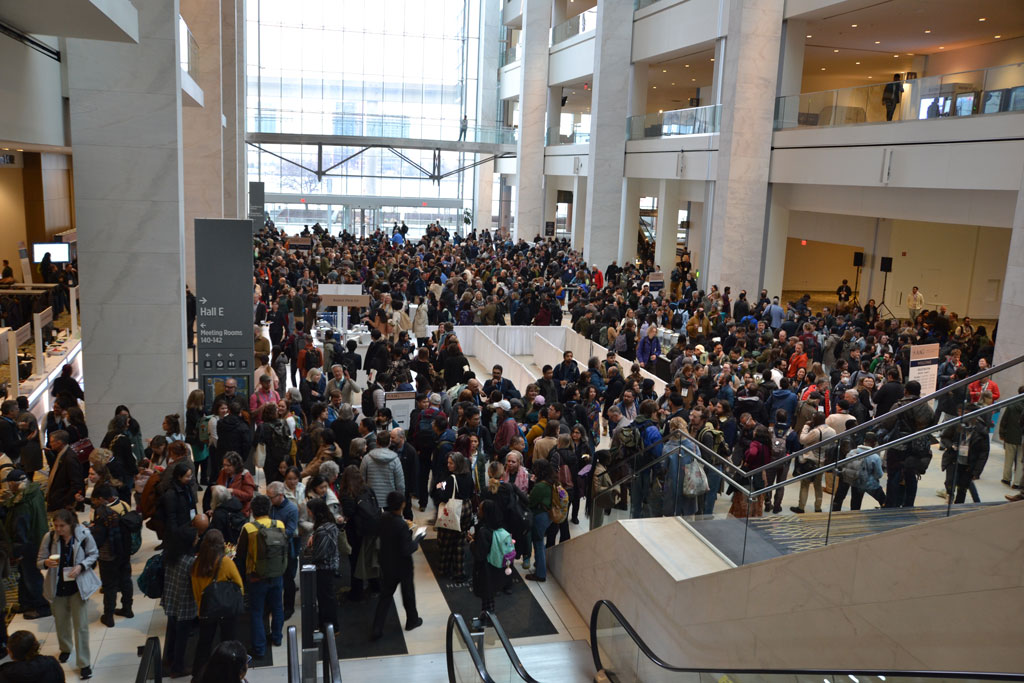
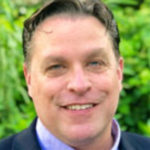
Just a month ago, I was watching geographers from 80 countries connect and move from session to session at the Annual Meeting in Detroit. The natural light that flooded into the Huntington Place convention center made the space feel inviting while allowing a good view of the Detroit River. You may have seen people fishing outside as the walleye run was peaking. The river also marks the border with Canada, counterintuitively south of the center, reminding us of the moment’s politics. Yet, despite the politics of the moment, geographers from more than 80 countries chatted and greeted each other, reminding us of the restorative power of being together as a community.
It had been 40 years since AAG was last in Detroit, a city synonymous with grassroots activism and geographic innovation. This year’s theme, Making Spaces of Possibility, underscored our commitment to equity, climate justice, and amplifying marginalized voices. These themes were on display everywhere you looked and in every meeting room. More than 5,600 of us gathered in over 1,000 sessions during the week. Concerns over border crossing led to the rapid conversion of nearly 160 sessions to hybrid. Our ability to quickly switch formats builds on our investments in climate-friendly meeting options. And, while we didn’t imagine the current strains on international travel, I am proud of our fantastic staff and the systems that helped us meet the moment.
The meeting also honored Detroit’s legacy as the birthplace of the Detroit Geographical Expedition and Institute (DGEI), a pioneering initiative in community-driven mapping and racial justice. Sessions with Gwendolyn Warren, Katherine McKittrick, and Joe Darden were highlights for me. I hope you watched the video series preparing us for Detroit, too. Thinking of Detroit’s history through activism, migration, and food enriches the overall experience.
On My Mind: Challenges and Opportunities
International Members
As geopolitical tensions rise, we reaffirm our commitment to fostering a global geographic community. International voices are vital to our discipline’s growth. The recent attacks on scholars with student visas, often for trivial legal infractions, illustrate the intent to undermine these community members who are vital to geography and academia in the United States (see our recent joint statement). I’ll talk more in future columns about balancing the need to advocate for geographers while ensuring we don’t increase their risks and challenges. These are imperfect trade-offs, but we always try to err on the side of not harming members.
Federal Funding for Science
Recent federal actions have frozen grants and dismantled diversity programs, jeopardizing research and careers. Since legal avenues will likely be our most successful approach in the near term, AAG looks to coalitions to help us resist and overcome these challenges. We recently partnered with AFGE, the federal employee union, to help them fight layoffs at NSF. Many of you shared stories about how cuts impacted you, your research, and your departments. We can use these testimonies to make the impacts of reductions real to policymakers and judges.
Our students take many jobs over the summer through federal agencies and working on research funded by agencies like NSF and NOAA. These students are our future land stewards. When we ask employers (in the private and public sectors) about what makes a great land manager from our university, they invariably emphasize the importance of real-world field jobs. The disappearance of these jobs is not just a loss to federal agencies and the many rural communities where the jobs are situated. It is a loss to our future workforce and our natural resources.
—AAG member response to federal cuts
We also join in statements issued by coalitions (for example, ACLS, Union of Concerned Scientists, AAUP, etc.). Scientists are being encouraged to share the stories of what NSF funding makes possible, and what is at stake, with the hashtag #WithoutNSF. Share your stories on social media and tag AAG so we can follow and amplify.
While collective advocacy will be critical, we also need individual action. Calling or visiting your elected representatives effectively ensures they know how their constituents feel. For some members, this is a familiar approach; for others, it’s new. We will bring opportunities and training to members in the future. We also have a new tool that alerts us to challenges to academic freedom in states. We can then alert members in those states to take local action. During the meeting, for example, we sent out an alert about SB1 in Ohio, which did pass as expected, but was under more scrutiny due to alerts such as ours.
Academic Freedom
The ability of academics to teach and conduct research free of political interference is critical to a functioning society. These principles are fundamental to AAG and yet are under threat in ways we never imagined. Not since the “red scare” of the 1960s have we seen direct threats to these freedoms. The emergence of modern academia since the Civil War and the core statements of academic freedom in 1915 and 1940 remind us of how recent and fragile these bedrock principles are.
Academic freedom can serve the public good only if universities as institutions are free from outside pressures in the realm of their academic mission and individual faculty members are free to pursue their research and teaching subject only to the academic judgment of their peers.
—AAUP, Statement of Principles of Academic Freedom and Tenure, 1940
Academic societies like AAG embody these principles primarily by publishing peer-reviewed articles and hosting conferences. Within the scope of each journal, submissions get peer-reviewed and edited by subject-matter experts but are otherwise wide ranging in content and breadth. Within professional standards and ethics, anyone can present on any topic at our meetings. This neutrality is central to academic freedom: AAG does not judge which ideas are right or wrong but provides a safe space to debate and explore ideas. This open-ended format is intended to maximize access to ideas, and it embraces openness toward who can present them. Encountering ideas or conclusions one disagrees with is a feature and not a bug. It’s this format which makes sessions exciting and enriching. However, it’s also why professional codes of conduct and boundaries are essential. For example, no one has the right to interrupt a speaker, regardless of one’s thoughts on the content. With no rules, these discussions can move from invigorating to oppressive. Recent threats to academic freedom remind us why these spaces to discuss ideas are vital, and why AAG must stand up to those who seek to silence our voices and rights to open discussion.
Looking Ahead to San Francisco 2026
Last week, I visited San Francisco to begin planning for our next annual meeting from March 17-21, 2026. We always listen closely to feedback about meetings and seek to improve each time. Indeed, Detroit had higher satisfaction scores than recent meetings. We know that affordability is a big concern, especially for students. I am pleased to report that we are working with additional hotels to offer great rooms, near the venue, at great rates. The hostel I toured this week was vibrant, fun and affordable. Just another example of our commitment to bringing the best experiences to our members, available to all.
Registration will open this summer, and I hope you are thinking of session ideas. Let’s continue building spaces of possibility together.
Please note: The ideas expressed by Executive Director Gary Langham are not necessarily the views of the AAG as a whole. Please feel free to email him at glangham [at] aag [dot] org.
